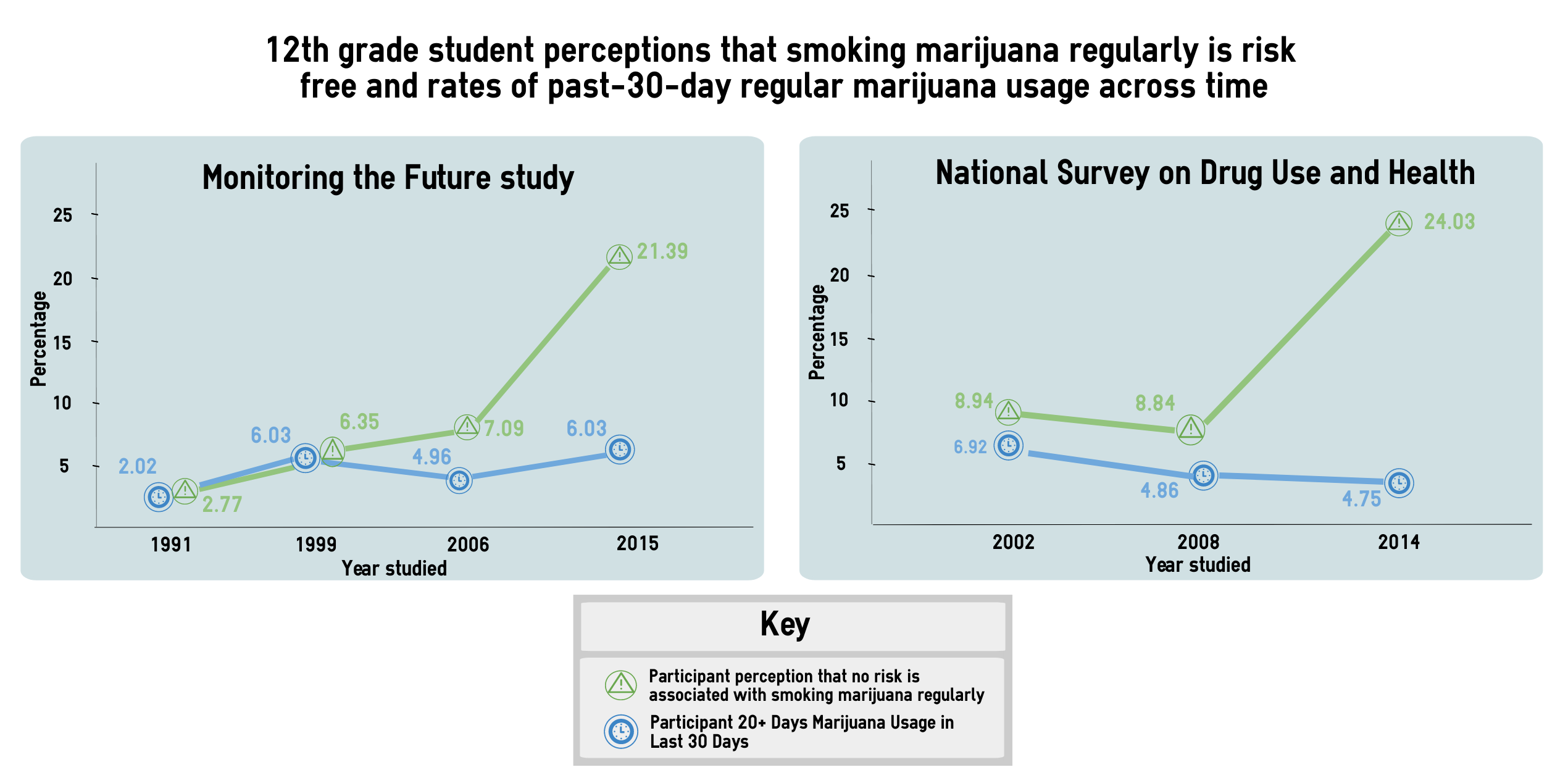Medical and recreational marijuana have become increasingly available to American adults over the past two decades. Some fear that increased availability might make adolescents view marijuana has harmless, despite the fact that adolescents who use marijuana regularly are at risk for altered brain development and/or low academic achievement. This week, STASH reviews a study by Aaron Sarvet and colleagues that explores how perceptions and use of marijuana among 12th-graders have evolved over the past two decades.
What is the research question?
Does increased availability of marijuana change 12th-grader perceptions of marijuana-related health risks? How do these perceptions relate to marijuana usage?
What did the researchers do?
The researchers assessed data collected from two cross-sectional, nationally-representative surveys of 12th-graders: (1) the Monitoring the Future study (MTF; 369,899 12th-graders) and (2) the National Survey on Drug Use and Health (NSDUH; 35,530 12th-graders). Participants responded to questions about frequency of marijuana use during the past-30 days and perceived harmfulness of regular marijuana use. The researchers considered participants “regular marijuana users” if they reported twenty or more days of marijuana use in the past 30 days. The researchers calculated annual averages of past-30 day marijuana use and perceived harmfulness of regular marijuana use.
What did they find?
In both samples, reported past-30 day use of marijuana remained stable over the study period. However, in both samples, perception that marijuana is harmless increased from about 7% around 2007 to between 21-24% around 2014. (See Figure 1).
Figure. Note: These line graphs report only partial data from available percentages reported in the original article. MTF reported annually from 1991 to 2015. NSDUH reported annually from 2002 to 2014. See page 71 for a comprehensive line graph of each year. Click image to enlarge.
Why do these findings matter?
Some fear that legalization leads to increased marijuana usage among adolescents. This fear is challenged by the observed increases in perception that marijuana is harmless, paired with stable rates of daily use over time. Barriers to access and cost might be additional factors that limit marijuana use among this group. These findings suggest that the continued use of well-designed and long-term studies can help policymakers make informed decisions about the true effect of legalization.
Every study has limitations. What were the limitations in this study?
Self-reported marijuana use might not be an accurate representation of actual marijuana use. Participants might alter their responses if they fear legal consequences or parental notification of marijuana use behaviors. The researchers did not ask questions about where participants obtained their marijuana. These sources are important considerations when policy makers or activists make claims about how legalization impacts youth marijuana use. It is also possible that marijuana use might have decreased instead of remaining flat over time if legalization had not occurred.
For more information:
If you think that you or anyone you know might be experiencing substance use or gambling-related problems, you can find help resources on the BASIS addiction resources page.
— Pat Williams
What do you think? Please use the comment link below to provide feedback on this article.





